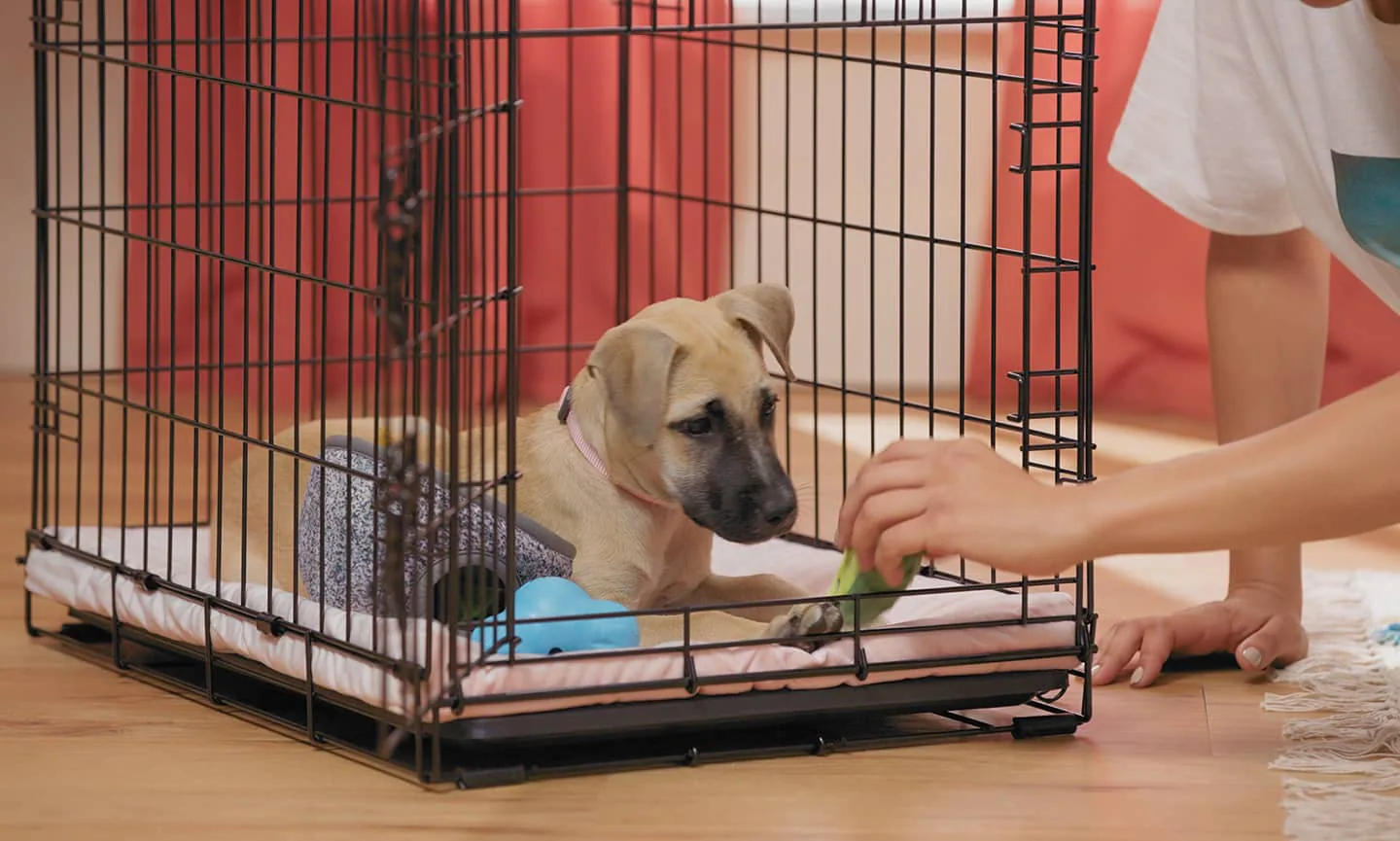What Is Crate Training?

Crate training is a popular method of potty training and behavioural modification for dogs. It involves confining the dog in a crate, which is typically a small, confined space with just enough room for the dog to turn around and lie down comfortably. The goal of crate training is to help your dog become accustomed to their crate so that it becomes a safe place for them to go when they need some peace and quiet or just want to relax.
Crate training allows you to give your pet its own private den-like space away from other people and animals in the house. This makes it easier for you to teach your pet basic obedience commands while also providing them with an area they can call their own. This idea of a safe space is crucial for any dog breed, whether you’ve got an adventurous Weimaraner or a gentle little Shiba Inu puppy.
What Are the Benefits of Crate Training?
Housebreaking
Crate training helps manage your pup’s bathroom habits, which can be especially helpful for puppies who are still learning how to go potty outside. By keeping them in their crate, they will resist going potty in their sleeping space. Eventually, crate training helps them learn that going potty in their crate is not acceptable and will eventually come to understand that they should only go outside.
Potty Training
The confinement of being in a crate helps speed up the potty training process since you will always have a space where your dog knows they should not go potty. This makes it easier for you to take them out at regular intervals so they can become familiar with where they should be doing their business.
Safety
Crate training provides a safe place for your pup when you’re not around or don’t want them wreaking havoc on your furniture or other items around the house. This way you can rest assured knowing that when you leave your dog alone for work or errands, everything will be in its place when you come back home.
Separation Anxiety
Crates provide security and comfort for dogs who suffer from separation anxiety or find it difficult to be left alone during certain times of day (like overnight). Having this dedicated space gives them somewhere safe to retreat and relax while you’re away so they don’t feel anxious or overwhelmed by being alone for long periods of time.
Behavioural Issues
Crate training can help reduce behavioural issues because it allows you to teach your pooch boundaries and what behaviours are acceptable while discouraging those that aren’t allowed in the house. Dogs that feel safe and secure in their crate are less prone to act out of nervousness or anxiety.
How To Start Crate Training Your Dog
Here’s what you need to get started with crate training:
- Choose the right size crate for your dog
A crate should be big enough for your dog to stand up, turn around, and lie down comfortably without feeling cramped. Place the crate in an area with minimal distractions such as a quiet room or corner of the house. If possible, try to place the crate near family activity so that your pup doesn’t feel isolated.
- Make sure the crate is comfortable and inviting
Line the bottom of the crate with a blanket or bedding that is easy to wash and replace when needed (you may want several layers). Add some toys to make it fun and entertaining when they are in there, such as a stuffed animal or chew toy.
- Introduce your pup to their new crate
Encourage your dog to gradually acclimate to their new “den” by feeding them near it or placing treats inside the door of the open crate so they can start associating positive experiences with being inside it. Don’t force them in at this stage; allow them to explore it on their own terms until they become comfortable entering of their own accord.
- Reinforce good behaviour
Start using commands to reinforce good behaviour when your dog enters and exits their crate, such as “go in” or “time out” when they enter and “come out” or “all done” when they leave it. Using a verbal cue will help them understand what you expect from them each time they enter or exit the crate, making it easier for them every time after that.
- Practice crating
Gradually increase their time spent in there by offering longer treat times (or meals if you are trying to potty train) inside the closed door of their crate before allowing them out again. Gradually increase this time until they are able to stay there for longer periods without becoming anxious or stressed out. This usually takes several weeks, and the time increases should be small when you start out – if your dog has only gotten used to spending 15 minutes in their crate at a time, an hour is going to be too long.
